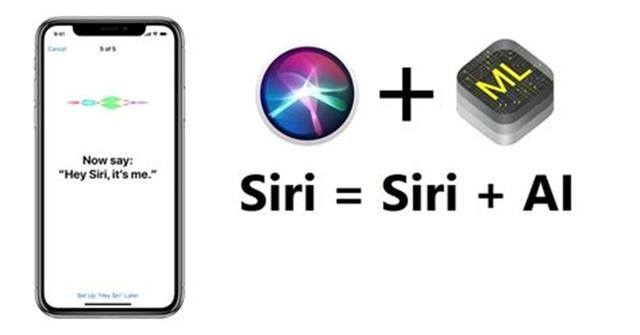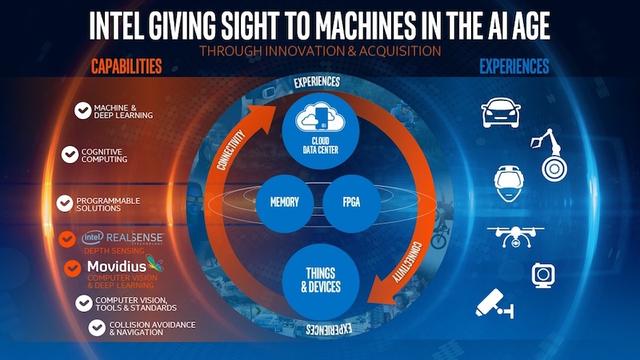Last Artificial Intelligence advancements acquired by technology giants company
by Ready For AI · August 1, 2018
The artificial intelligence advancements is rapid in a few years, In particular, some technology giants companies have made great progress. For example: self-driving cars, artificial intelligence assistants, smart doctors, etc.

Google - making artificial intelligence easier to use and safe
A few days ago, Google was attacked for participating in the development of artificial intelligence weapons. After the project was strongly protested by the public, Google decided to re-evaluate their artificial intelligence approach. In June of this year, Google released a set of guidelines that set out their commitment to the development of ethical artificial intelligence.

Recently, Google introduced a cloud-based artificial intelligence platform that allows developers to use container-packaged software applications and access the tools they need, when and where they need it.
It’s all the result of Google’s powerful voice and artificial intelligence interaction. On the one hand, Google is competing fiercely with companies such as Amazon and Microsoft, and on the other hand is working hard to develop and deliver various AI applications to meet the needs of multiple usage scenarios.
Amazon - expanding the range of artificial intelligence services
Like Google, Amazon is working on developing cloud-based artificial intelligence services and providing developers with more convenience.

In 2017, Amazon launched the Amazon SageMaker service to create a development framework that allows companies to integrate machine learning into their new applications faster. Amazon SageMaker is a fully managed end-to-end machine learning service that enables data scientists, developers, and machine learning experts to quickly build, train, and run large-scale machine learning models.
At the recent AWS Summit, the company announced new computing services available on its cloud platform and their recent efforts in machine learning.
The company announced that the improved SageMaker service allows developers to build and test applications in the cloud. The introduction of the SageMaker flow algorithm means that developers will be able to transfer large amounts of data and effectively train custom machine learning applications.
Apple - improving Siri and acquiring companies to catch up quickly
Despite Apple’s popularity, its development in the AI sector has lagged behind its competitors, and Siri and other AI project development industries have not yet reached the level of data advertised by Google and Amazon.

However, this situation is changing. In early July, Apple’s core machine learning team welcomed John Giannandrea, former head of Google’s AI, as their head of machine learning and artificial intelligence strategy, and Giannandrea will report directly to Apple CEO Tim Cook.
This is just one of Apple’s many measures to improve the competitiveness of AI. In 2017, Apple completed the acquisition of several AI startups, including Israel’s facial recognition technology company RealFace and German eye tracking technology company SensoMotoric. Both acquisitions indicate that Apple is entering a more advanced and intuitive AI platform, enabling the company to catch up with its competitors as soon as possible in the field of artificial intelligence.
Microsoft - try to save the environment through AI
In July, Microsoft announced a partnership with National Geographic to fund global environmental research and launched a $1 million “AI for Earth Innovation Grant” program that allows data scientists to use Microsoft’s cloud services and some AI tools.

The program will select 5-15 grantees, ranging from biodiversity conservation, climate change, agriculture or water resources research, with a funding of less than $200,000 per project. In addition, all AI models that are funded through funding programs need to be shared open source, allowing other researchers to continue research.
In addition, Microsoft recently released information about Dynamics 365 AI. This is Microsoft’s next-generation cloud smart business application, which helps companies achieve digital transformation through the integration of CRM and ERP software. Although Microsoft does not focus on individual consumers like other competitors, Microsoft’s latest AI action undoubtedly proves the rapid spread of the technology in different industries and fields.
Intel - developed AI in the self-driving, medical and other fields
In recent years, Intel’s attitude toward artificial intelligence has become very clear. In order to advance its artificial intelligence strategy, the company has cooperated with Chinese technology giant Baidu to develop artificial intelligence for self-driving cars.

At the beginning of July, at the Baidu AI Developers Conference, Intel announced an in-depth cooperation with Baidu to participate in the Baidu Apollo self-driving car project and decided to use the Responsible Sensitive Security (RSS) model.
Intel is also working with Samsung to explore the possibility of using AI in healthcare applications with a view to creating an AI that can study different diseases and even detect tumors.
In addition, Intel has co-founded a digital publication with Forbes magazine to focus on artificial intelligence-based news creation.
IBM - using AI to treat cancer and debate with humans
In the past two years, IBM has made several headlines with its revolutionary AI system, Watson. Currently, Watson has been used to self-driving cars and daily business activities.

As part of Watson Health, IBM worked with the US Department of Veterans Affairs to develop treatment plans for cancer patients based on their specific genomic data.
Launched in 2016, the project has demonstrated the benefits of using artificial intelligence in a healthcare environment, particularly in the compilation and evaluation of data, which is much faster than any human medical professional.
In June, IBM’s latest AI project, Project Debater, defeated the top human debaters in a debate. Project Debater has no clear business goals, but its impressive technical presentation is another good example of IBM’s layout in the field of artificial

















